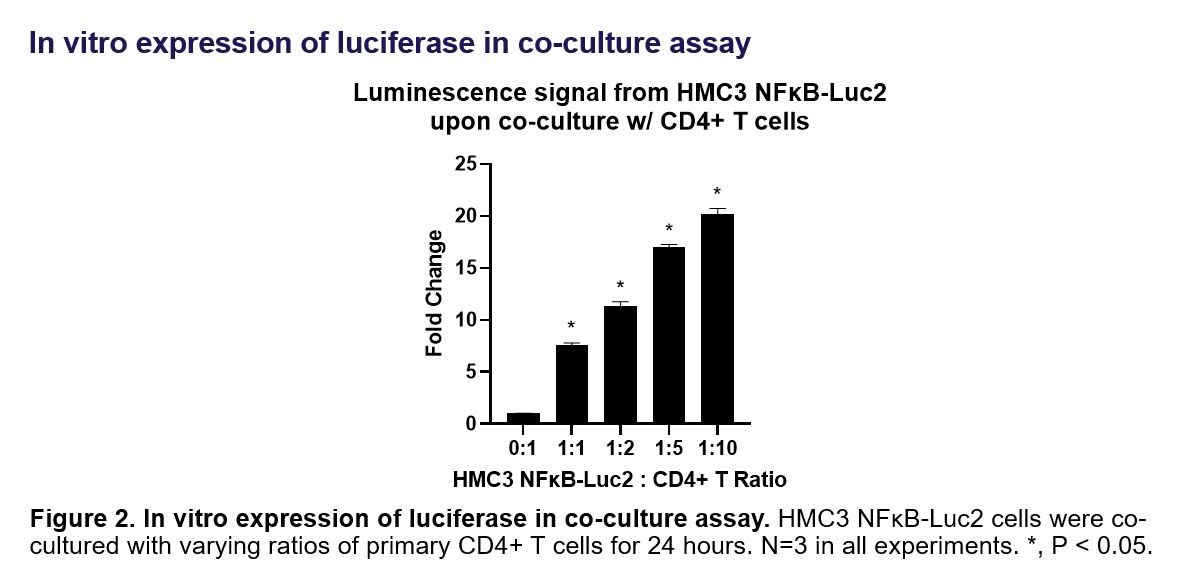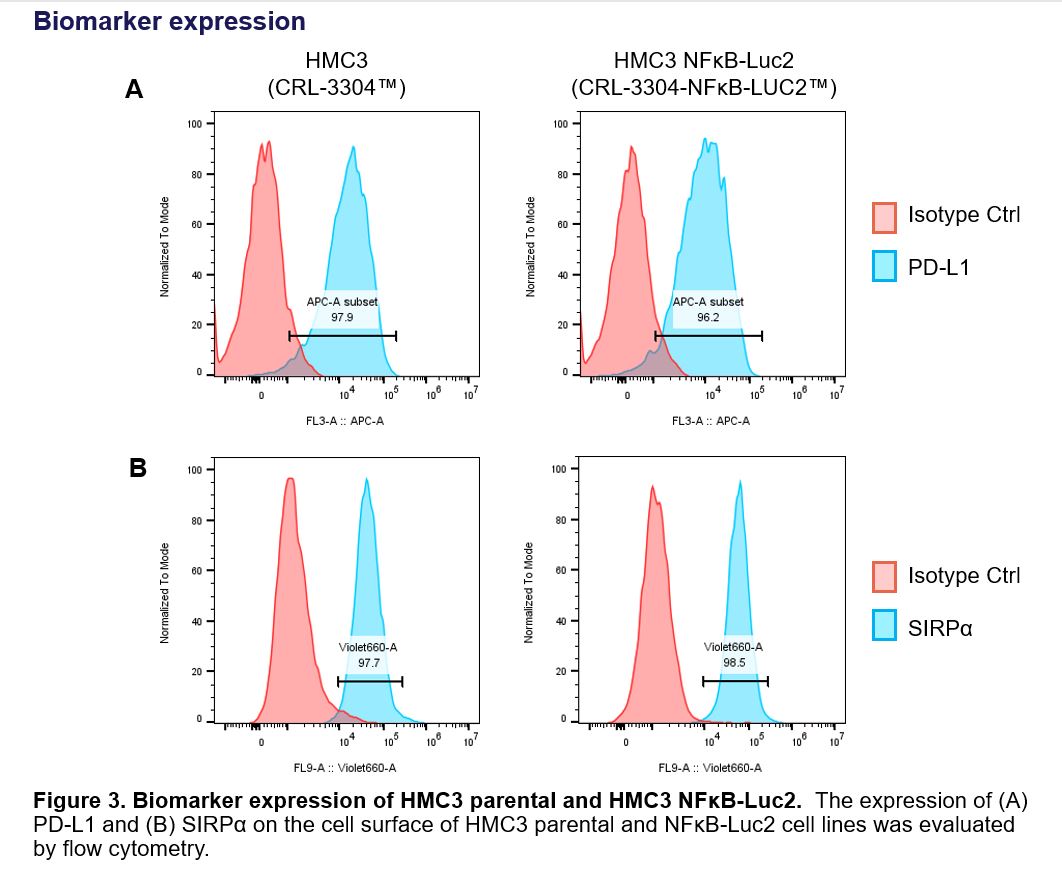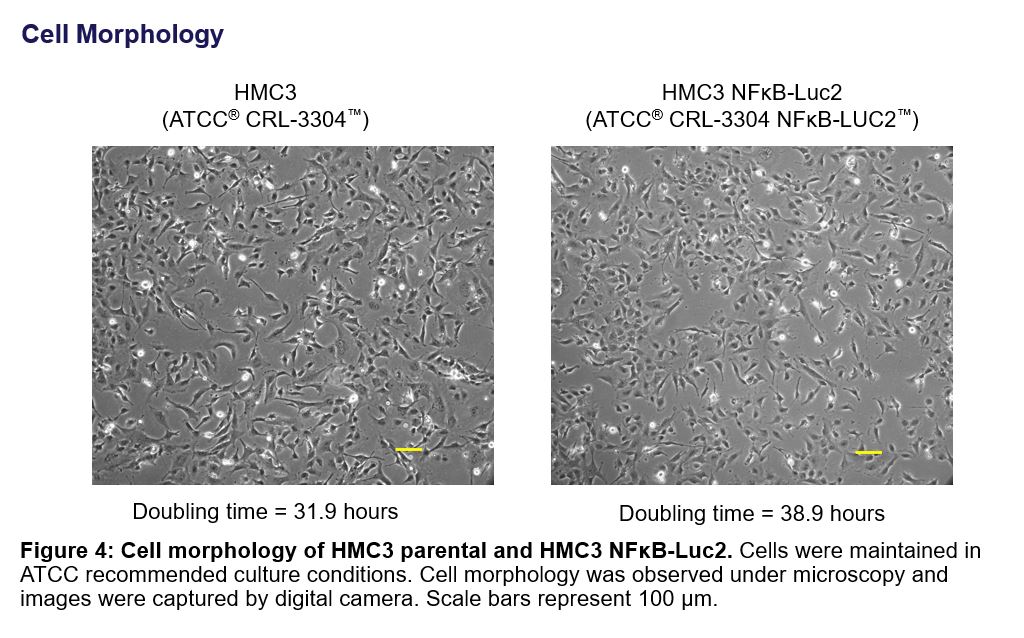HMC3 NFkB-Luc2
CRL-3304-NFkB-LUC2 ™
Use promo code ATCC-000039 at checkout to save 10% on this product.*
*This offer is effective from October 1 – December 31, 2024. The 10% discount applies only to ATCC Checkpoint and CAR-T Target Reporter Models; all other items are excluded from this promotion. For non-profit customers, the promotional discount is applied to the customer-specific pricing. The promo code must be applied at the time of checkout. The promo code must be applied in the “Promotional code” field in the shopping cart. Void where prohibited. Restrictions may apply. Limit 20 vials.





